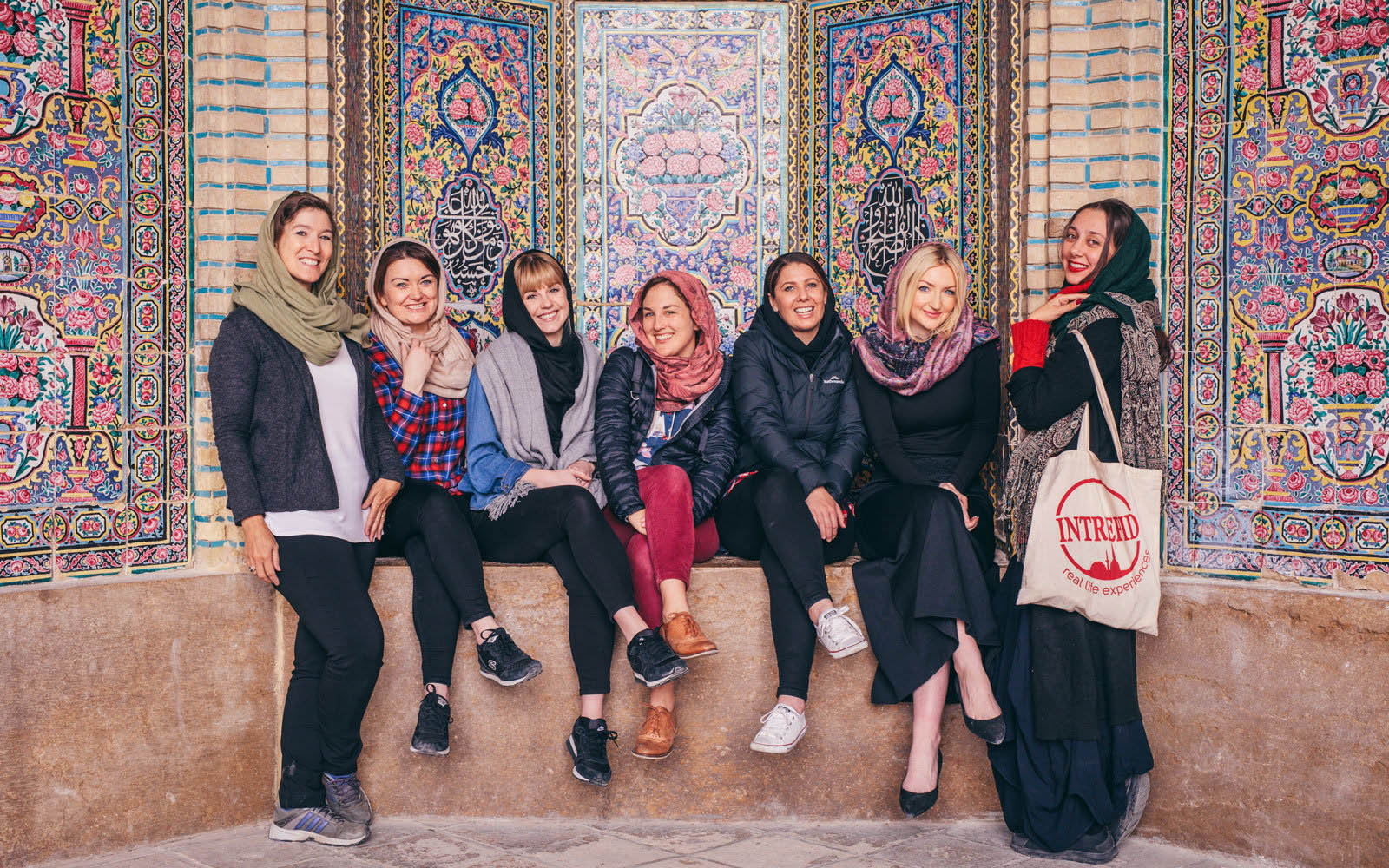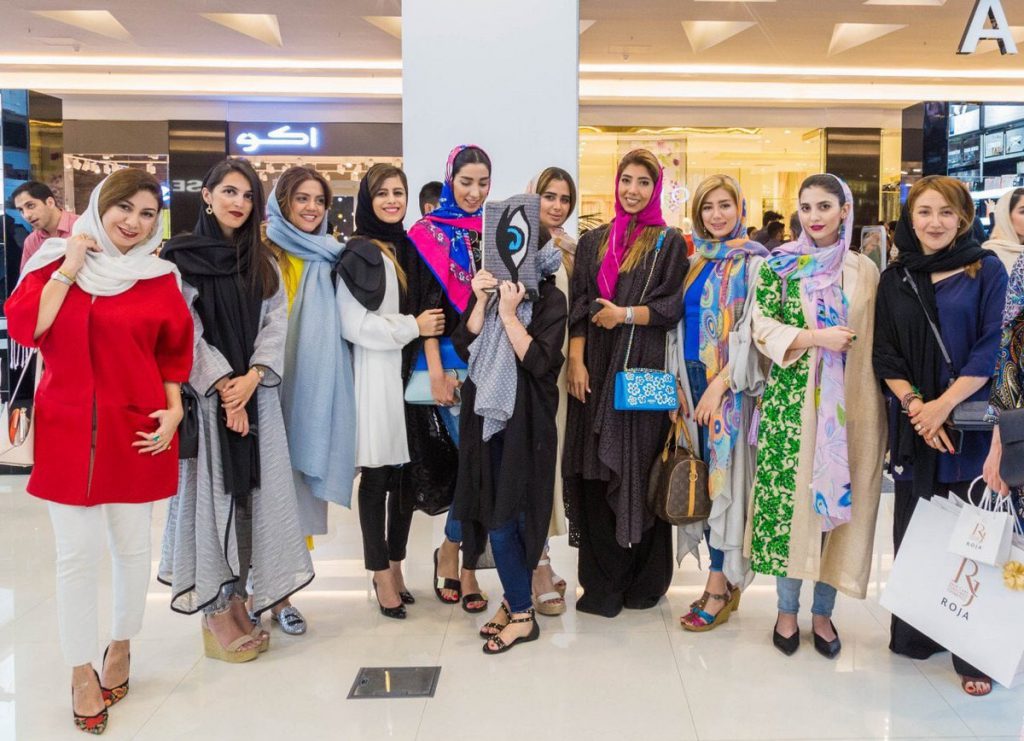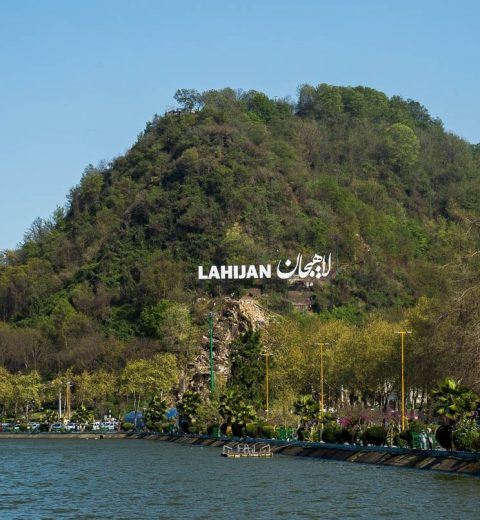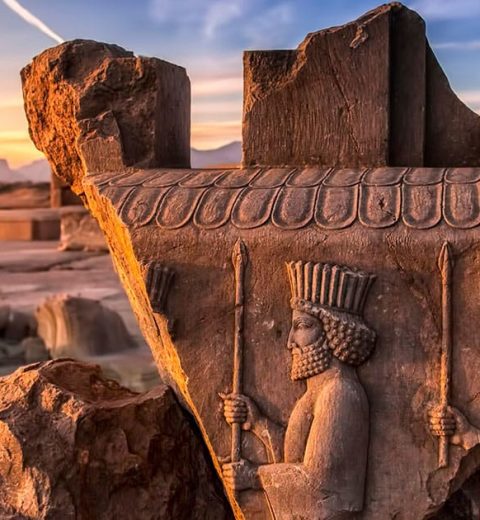For women who travel to Iran for the first time, the Islamic dress code prescribed there is probably the biggest headache in advance.
What is the Islamic Dress Code?
In Iran, the Sharia and thus also the Islamic dress code ( hijab ) applies. For women, this means that they must keep all parts of their bodies covered except for hands, feet, and face in public and should not wear tight-fitting clothing.
If you think of face coverings like niqab and burqa, then you are completely wrong, because these are extremely unusual in Iran.
Instead, the majority of women in Iran, especially in rural areas, use a chador: a crescent-shaped black cloth that is wrapped completely around the body and held in place with one hand, with the teeth or under the armpits.
So much for the theory – because young Iranian women in the big cities explore the dress code to its limits:
Instead of the chador, they use a combination of a knee-length coat and headscarf, called manto-rusari. Underneath, they wear tight-fitting trousers and put the colorful headscarves so far back on their hair that they almost no longer serve their purpose. Few of the city dwellers hold back with strong make-up and nail polish.
There are several variants of the headscarf itself in Iran:
- The classic rusari is a square and diagonally folded cloth that is knotted under the chin or held together with a safety pin or clip.
- A shawl, which is placed loosely over the hair and shoulders, is much more contemporary.
- At schools, universities, and in the public service the maghne’e is mandatory, a headgear in which only a hole is left for the face.
What clothes should I pack for a trip to Iran?
For the headscarf, you should take a scarf from home and then you can buy beautiful, colorful fabric scarves in the bazaars.
Also, make sure to take a headscarf in your hand luggage if you are traveling to Iran by plane. You have to put it on as soon as the aircraft lands in Iranian.
Tourists enjoy a little more freedom than Iranians and are allowed to wear wide, long tunics and blouses instead of a coat in the warmer months. In tourist places or larger cities (Tehran, Esfahan, Shiraz, Yazd, Kashan, Rasht) you won’t have any problems with it in combination with black, ankle-length leggings and sandals.
When shopping, make sure that the top is not visible on the breast, has no neckline (or that it can be easily covered with the headscarf), and extends to at least the middle of the thigh.
In more rural areas and in more conservative places you could wear a very light, single-colored cardigan over the tunic.








Thanks for the update